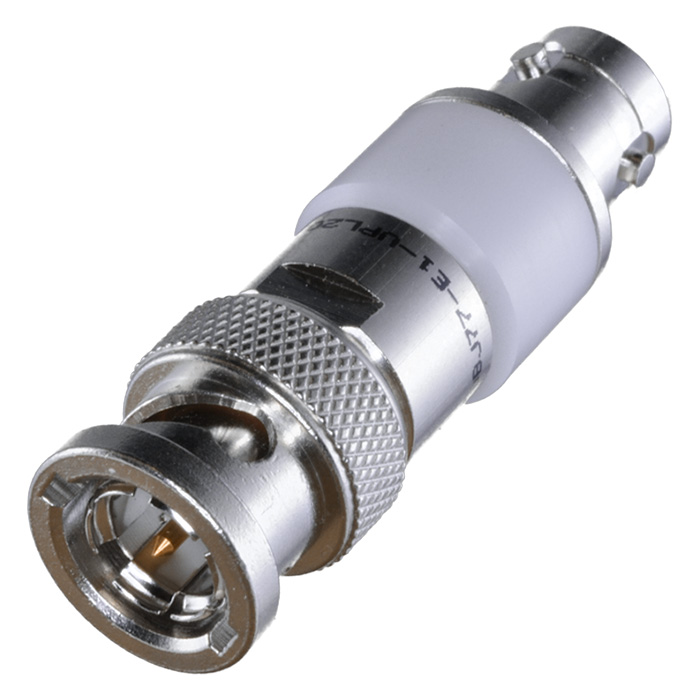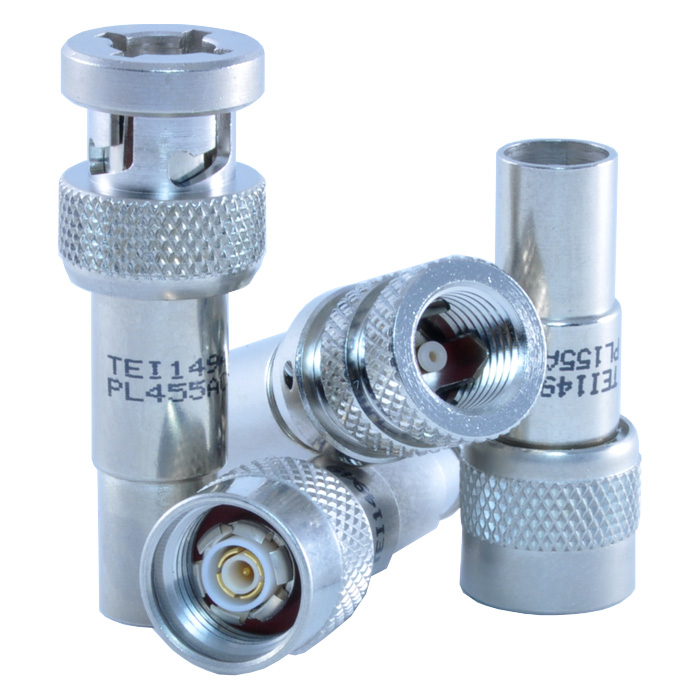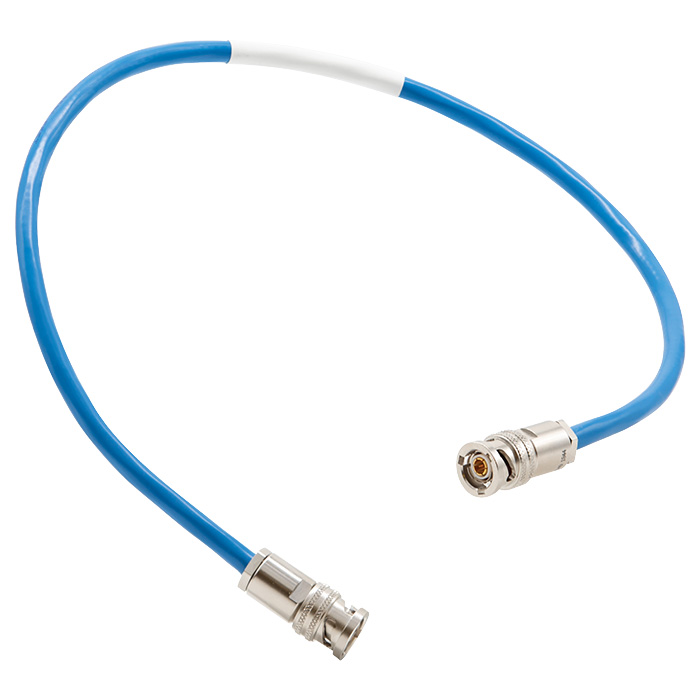
Low-Current Measurements Using Triaxial Cables
Detecting barely perceptible phenomena and exploiting new material properties are powerful tools in research, but require highly accurate measurements at extremely low currents. Leakage current must be mitigated to ensure valid results. Triaxial cables allow for guarded probing, which enables the measurement of very small currents and are becoming more widely used in advanced applications.
Introduction
Guarded probing is proven and effective for measuring tiny currents in the picoamps range and below. Using the right adapters is vital, to ensure signal integrity when connecting to measurement equipment that provides only coaxial connectors like SMA/SMP or BNC.
Detecting barely perceptible phenomena or exploiting new material properties are powerful tools in the search for solutions to the challenges found in industry, medicine, home life and other domains. Conducting parametric measurements on materials like graphene or organic materials, characterizing precision electronic devices or structures such as thin-film transistors, and creating advanced sensing systems or precision embedded instruments are increasing the demand for accuracy when measuring currents below 1nA and deep into picoamp or even femtoamp territory.
Eliminating Leakage Current
At such low current levels, leakage to ground through the insulation surrounding test probes can cause serious measurement inaccuracies. Guarded probing, applied properly, presents a means of eliminating leakage currents to enable highly accurate measurement of very small currents. It is already widely used in semiconductor wafer-level testing, to screen parts and characterize dies before back-end packaging. In this context, dedicated equipment such as semiconductor test stations or wafer chucks, designed with guarded probing in mind, provide proper triaxial connections and feedthroughs wherever needed.
As guarded probing now becomes more generally used throughout research laboratories, test houses, and other technical departments, engineers can find themselves needing to attach triaxial probes to equipment such as oscilloscopes, picoammeters or electro-meters that may be equipped with more general-purpose coaxial front-panel connectors. Care must be taken to select probes with suitable connectors and adapters, and ensure they are connected in the right way.
Guarded Probing Principles
In an ordinary coaxial probe, when the conductor is at a certain potential and the outer shield is grounded, a small leakage current can pass through the insulation between the main probe conductor and the cable’s outer electromagnetic shield. If the conductor is at a potential of 100V and the insulation resistance is 1GΩ, this current will be about 100nA. Although this may not affect current measurements in the milliamp or even microamp range, leakage of this magnitude will interfere strongly when trying to measure currents in the order of picoamps or femtoamps.
Guarded probing minimizes leakage currents by surrounding the main current-carrying conductor (also called the force) with a guard conductor that is driven at the same potential through a voltage follower, or buffer, as shown in Figure 1. Since there is ideally no potential difference between the force and the guard, no leakage current can flow through the insulation between the two. In practice, a suitable buffer may be able to track the force voltage to within one part in a million. If the measured signal is at 100V, as before, and the driven guard is at 100.000001V, the leakage current passing through the 1GΩ isolation of the dielectric layer is reduced to just 1fA, compared with 100nA in the previous example.
Completing the triaxial cable assembly, the grounded outer EMI-shielding conductor is separated from the guard by an insulating layer. Although a small current can flow between the guard and the shield, this is supplied by the buffer circuitry and hence has no effect on the measured current.
Figure 1: Driving the guard at the same potential as the force, using a voltage follower, prevents leakage currents flowing in the dielectric between the force and guard.
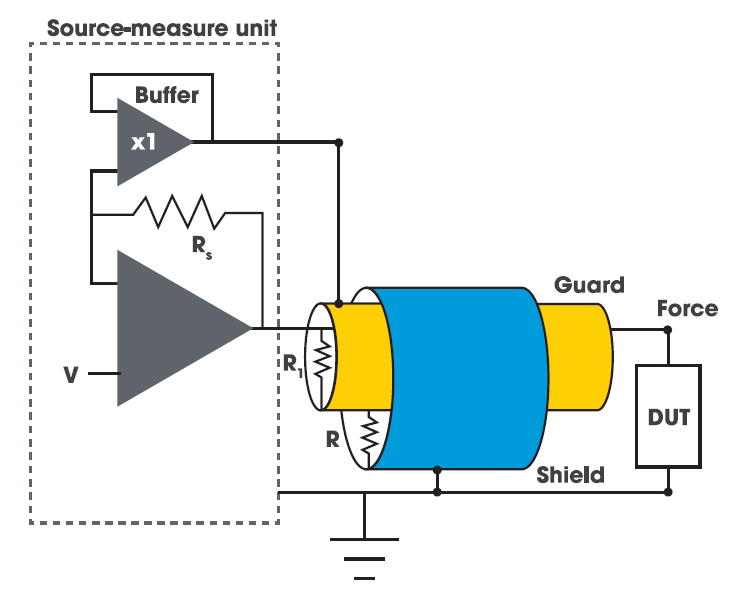
The capacitive effects of cable insulation should also be considered. If the test schedule requires the applied voltage to be swept, this parasitic capacitance will draw a charging current in proportion to its magnitude and the rate of change of applied voltage (Ic = C dV/dt).
Slowing the sweep rate to reduce this charging current will increase the overall test cycle time, which is not desirable. With a driven guard, provided the buffer’s response is fast compared to the sweep rate, the voltage between the force and guard remains constant and so eliminates the charging current.
Connecting to Measurement Equipment
There are several ways of connecting a triaxial probe between the device under test and the chosen measurement equipment.
Triaxial probes in a semiconductor wafer prober comprise a fine tip which is clamped in a collet and electrically connected to the force conductor of a triaxial cable. The probe arms may be controlled to move to preset X and Y coordinates such as wafer test points. Alternatively, static probes may be integrated in a fixture designed to be held in a wafer chuck.
Broader adoption of guarded probing may now see static or movable probes incorporated into a wider variety of test fixtures. The electronics for driving the guard must also be integrated. If measurements are to be carried out inside a shielded box, to minimize the effects of external electromagnetic fields, the probes may be brought out to panel-mount connectors at the edge of the box.
Makers of probes and test fixtures need high-quality triaxial cables and connectors in various configurations, such as cable-mount connectors or board-mount connectors such as the Trompeter CBJ157 series. The CBJ157 provides connections for the cable’s force, guard, and shield conductors and is available in straight or right-angled configurations. Triaxial cables can then be connected between these and the connectors at the front panel of the measurement instrument.
If the chosen instrument is a high-performance oscilloscope, or other equipment such as a picoammeter, it may be fitted with non-triaxial input connections such as BNC, SMA or push-fit SMP coaxial connectors. Of course, these types of connectors do not provide all the conductors needed to properly terminate a triaxial cable.
Discover Trompeter's CBJ157 Series
View Product DetailsAdapting Triax to Coax Connections
It is possible to create adapter cables that have a triaxial connector at the probe end, and a coaxial connector for connecting directly to the measurement instrument. Key concerns include how to connect the driven guard, and the potential effects on current-measurement accuracy and user safety. At the coaxial connector end, the cable’s outer shield could be connected directly to the outer coaxial connection, and the central force conductor connected to the inner signal contact as illustrated in Figure 2. However, this leaves the driven guard floating, which makes this arrangement unsuitable for measuring extremely low currents.
Figure 2. Safe triax-to-coax connection unsuitable for low-current measurement.
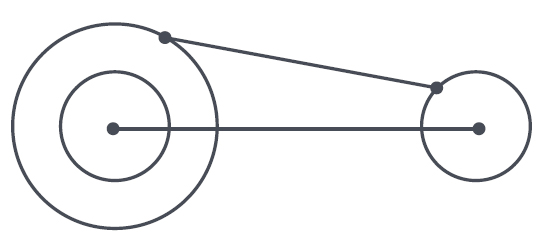
Alternatively, the guard of the triaxial cable can be connected to the outer coaxial connection, as shown in Figure 3. However, for this to be acceptable the outer coaxial connection must be isolated, not grounded. Moreover, if the probed test point is at a voltage above the SELV limit, the outer coaxial connector is at the same potential and so is considered a hazard to the user. Hence if low-current measurements are to be made using a triaxial probe with a driven guard, where the cable is connected to coaxial terminals at the instrument, proper triax-to-coax adapters should be used to ensure both safety and accuracy.
Figure 3: Driving the guard at the same potential as the force, using a voltage follower, prevents leakage currents flowing in the dielectric between the force and guard.
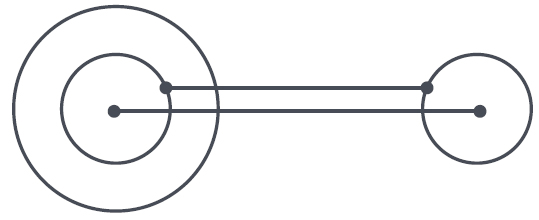
Trompeter has a comprehensive range of adapters for converting triaxial cable connectors to coax to ensure correct termination.
The 3-0350 bulkhead-mount triaxial-to-SMP miniature push-fit adapter (Figure 4.) is one example in a range that spans numerous coaxial connector standards, such as SMA, SMP, and BNC.
Figure 4: The Trompeter triaxial-to-BNC connector is part of a comprehensive family of connectors.
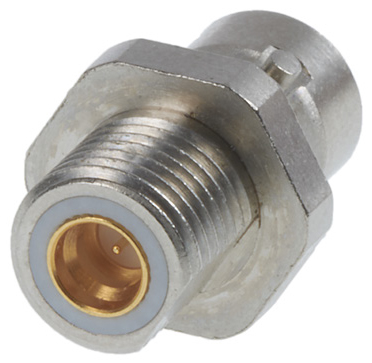
Conclusion
Applications for guarded probing, to measure currents in the picoamps and femtoamps ranges, are extending beyond specialized semiconductor wafer processing into high-tech fields such as advanced materials research. Correctly terminating the driven guard is essential, using suitable adapters to coaxial instrument connections if necessary, to ensure measurement accuracy and user safety.

